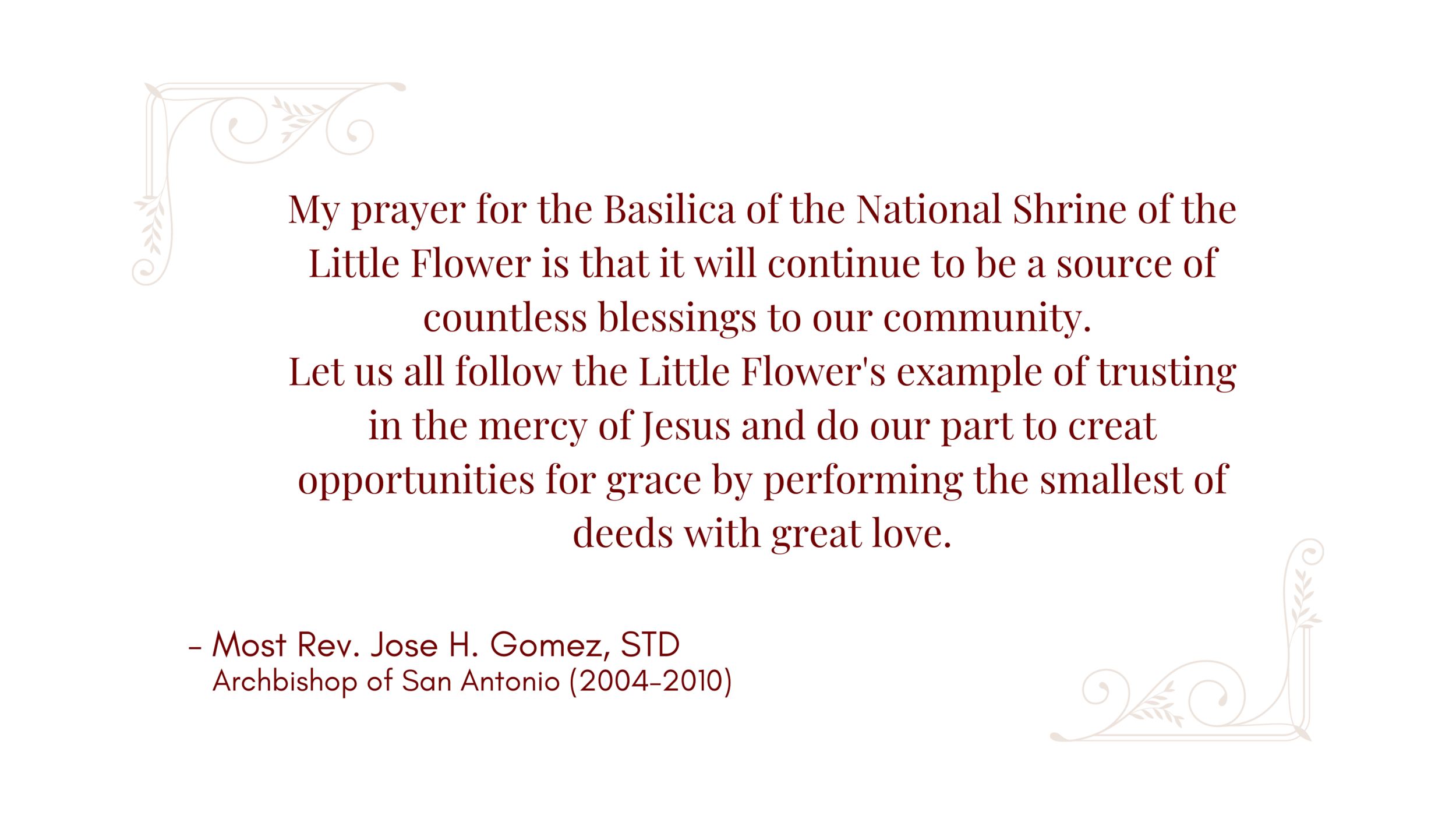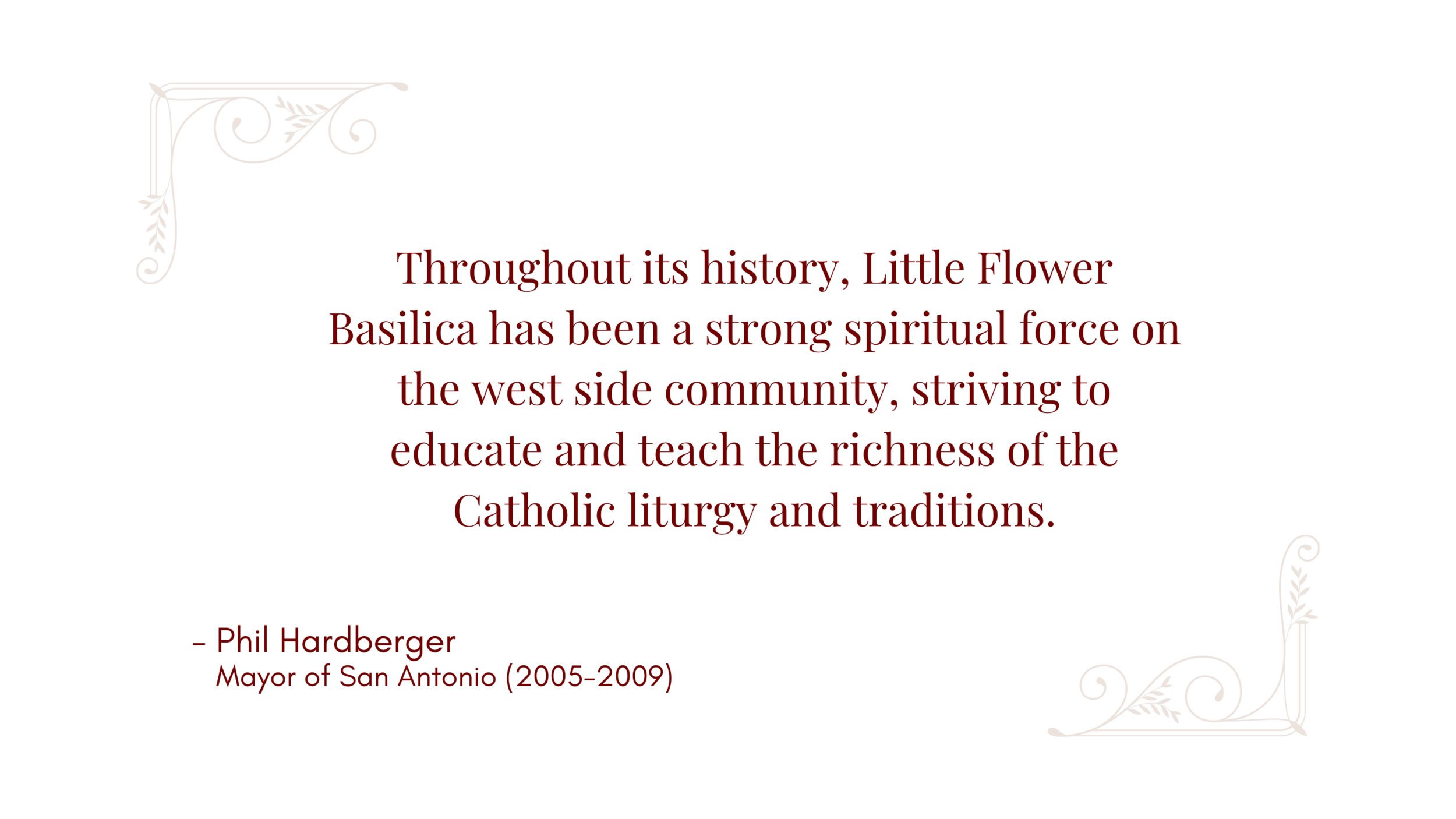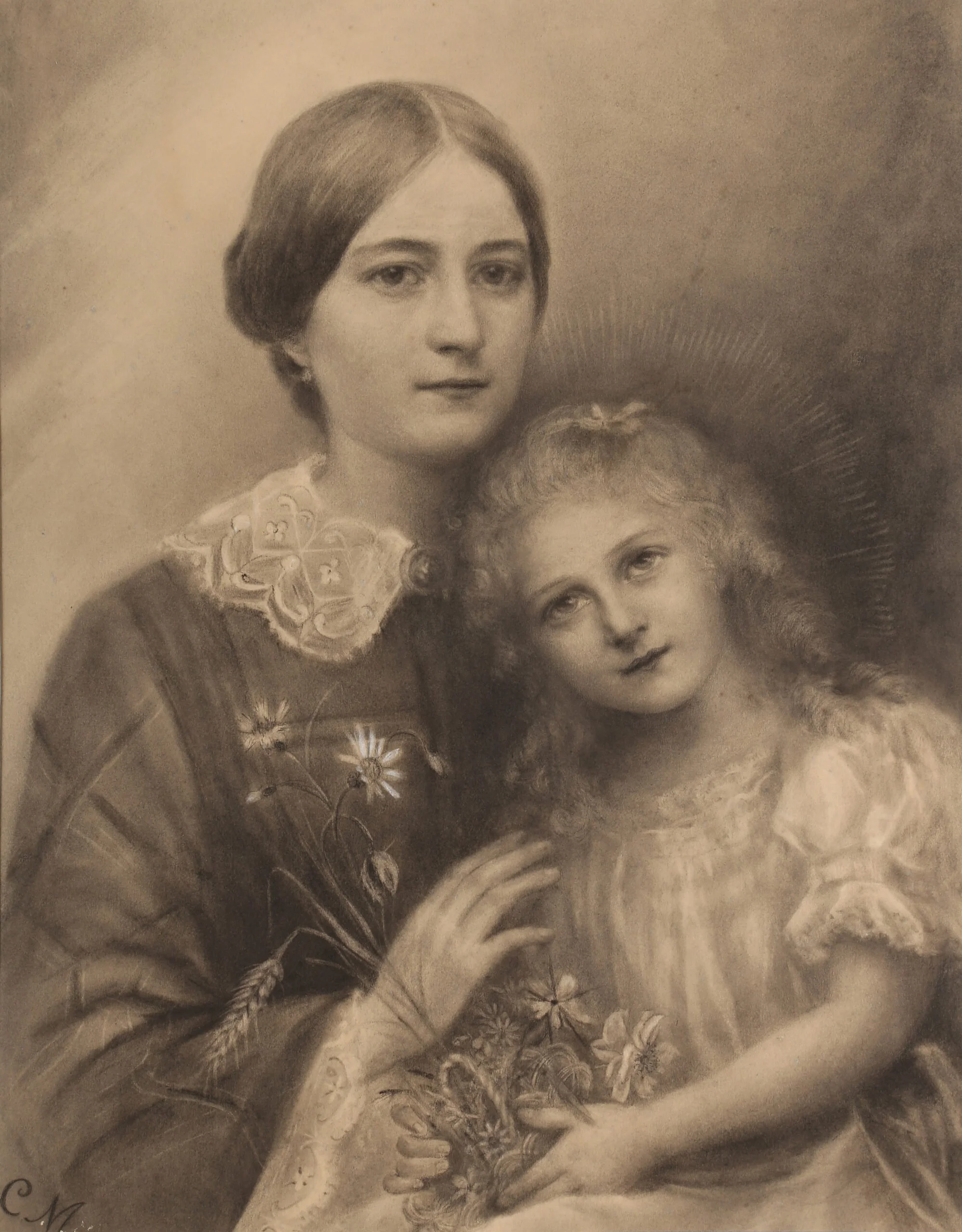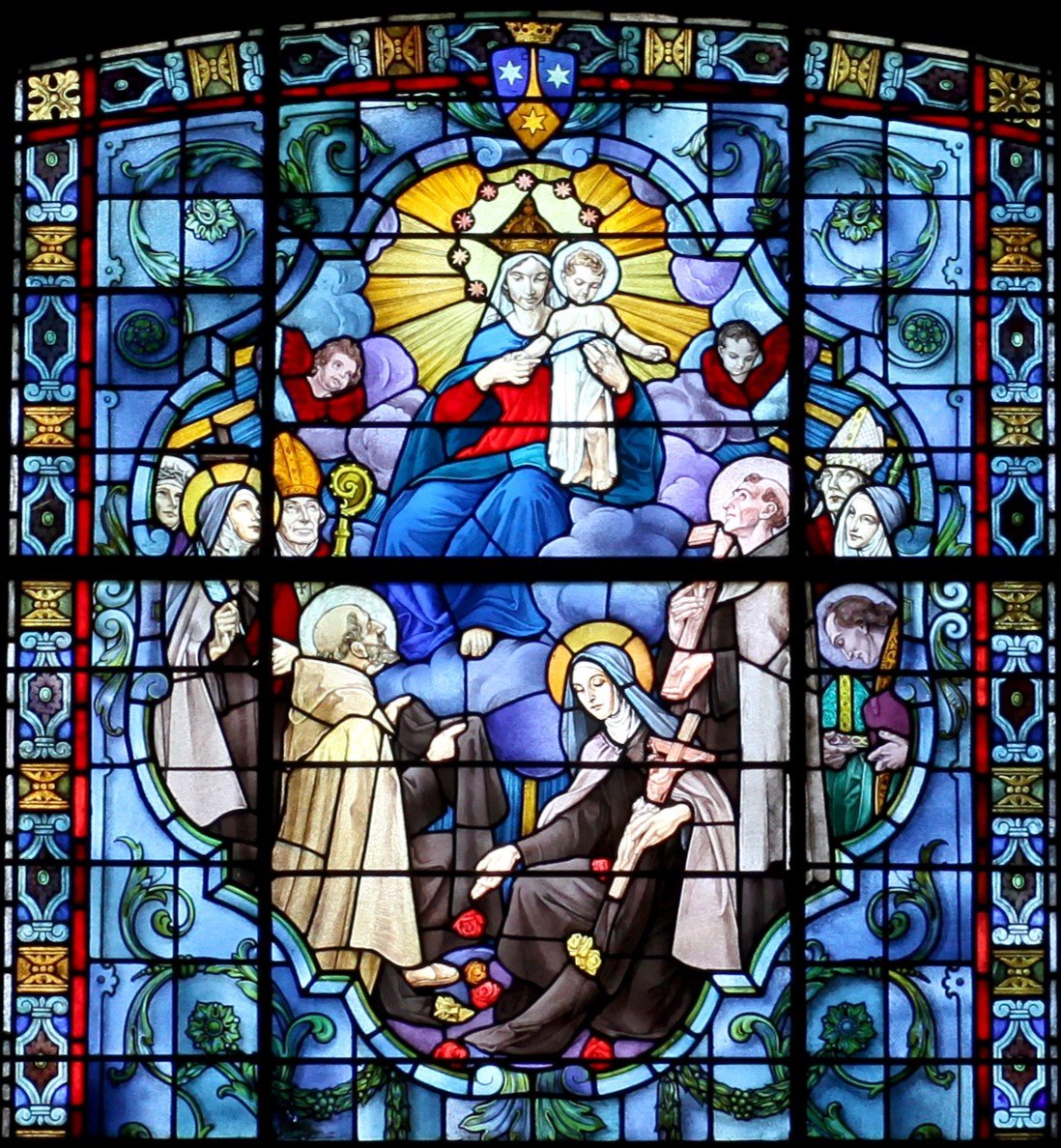About Little Flower Basilica
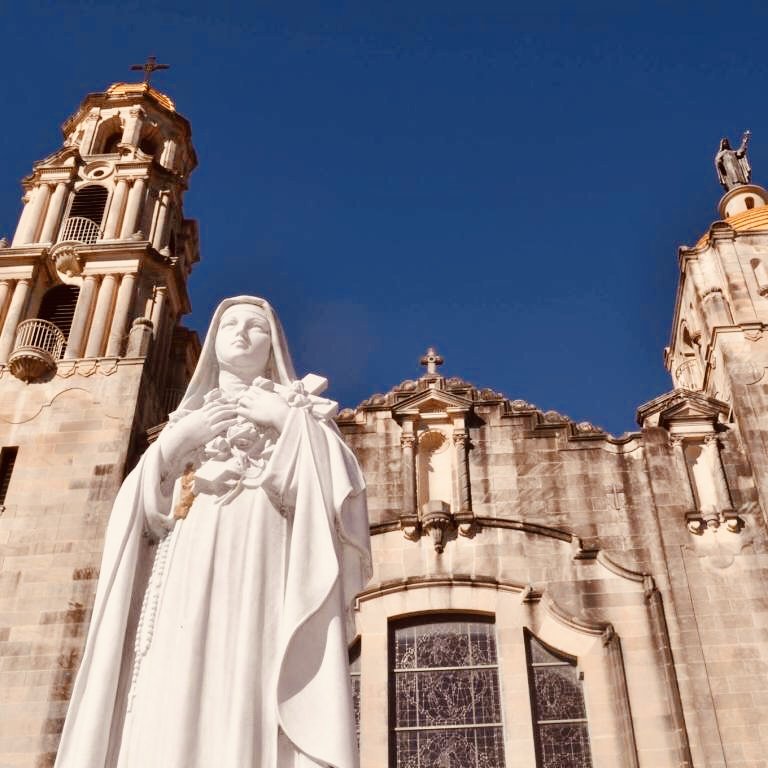
Today the history and treasures of the Shrine are integral to the propagation of the spirituality of St. Thérèse and the Carmelite charism.
The first National Shrine in the United States dedicated to St. Thérèse of Lisieux, the Basilica’s history begins at a time when our neighbors in Mexico were experiencing religious persecution and political upheaval during the 1913-30 revolutions. The resulting influx of immigrants was forming San Antonio’s first suburb. Among those immigrants were Discalced Carmelite friars who had escaped execution by Pancho Villa’s forces. At the same time, a revival of faith was spreading through the country. The teachings of the newly-canonized Thérèse of Lisieux, a Discalced Carmelite nun known as “The Little Flower,” were inspiring millions worldwide. It was then that the vision was fulfilled to express the spirituality of the Little Flower through a National Shrine in her honor in the heart of a flourishing Westside.
Built during the Great Depression, the Basilica of the National Shrine of the Little Flower stands today as a monument to the great faith of devotees of St. Thérèse. The Shrine’s notable size, beauty, architectural character, and spiritual significance led to its placement on the National Register of Historic Places and its elevation to the status of Minor Basilica in the Catholic Church, both in 1998.
Little Flower Basilica serves Catholics in the San Antonio area as a traditional parish and people from across the nation and all walks of life as a historical and spiritual landmark. The community of Discalced Carmelite Friars continue to serve parishioners and anyone called to explore the beauty of Carmel.
Little Flower’s classical architecture echoes the designs of old world churches, with the Shrine Chapel of St. Thérèse inspired by the original Tomb Chapel in Lisieux. The Basilica’s treasury of art, craftsmanship, and relics includes first-class relics of St. Thérèse, her parents, St. Louis Martin and St. Zélie Guérin Martin, as well as several other Discalced Carmelite saints.
Artisans have graced the Shrine with Carmelite stories told in glass, metal, wood, marble and oils. Shields of the Discalced Carmelite Order can be found all throughout the Shrine: One was etched into the cornerstone as the Shrine was begun and others carved into the limestone above the front and north entrances as the building progressed. The intricate mosaics and stained glass windows depict the lives of St. Thérèse , St. Teresa of Jesus, and St. John of the Cross. The rose— the symbol of St. Thérèse — serves as a common theme and is found in the floor tile, the stone and wrought iron detailing, the cast brass light fixtures, and the leaded glass of the dome window.
Learn More
Sometimes due to the requirements of our bulletin printer, donation reports may not be included in our printed weekly bulletins. Stay up to date by finding those reports here:
The mother of St. Thérèse, St. Zélie (baptized as Azélie-Marie, but affectionately known as Zélie)—is an appealing-to-many, newer saint (canonized along with her husband, Louis, in 2015) who offers much to mull over as the mother of the dearly-loved Little Flower.
Though Sts. Louis and Zélie did not intend to serve God as married people, they would eventually have nine children, four of them joining the Discalced Carmelite monastery in Lisieux, including St. Thérèse. What can we learn from these great saints?
Like the soaring arias and timeless symphonies, the Little Flower Basilica bells summon us to pause and connect with God and each other in community.
As part of our masterplanning and programming process, we completed many necessary studies including various engineering studies, a capital campaign feasibility study and an economic impact study laying a strong foundation for our impending and much awaited capital campaign and for the successful restoration of our historic Little Flower Basilica.
Moving forward, our task is to lay an organizational foundation that will provide the necessary leadership structure to see the project through to a successful capital campaign and execution of our master plan.
When St. Thérèse—at the age of 22—wrote down her childhood memories by order of the prioress, she painted an intriguing piece of art at the end—a specially designed Coat of Arms to express her heart’s feelings and inspirations.
At Christmas 1886 St. Thérèse experienced a profound conversion, recounting in Story of a Soul that at midnight mass a renewal came upon her as she felt charity enter her soul” and “the happiness of receiving the strong and powerful God.”
Thank you to all who participated to support your Little Flower Basilica community! With your help we exceeded our goal of raising $50,000 towards parish operations!
Moving forward, our task is to lay an organizational foundation that will provide the necessary leadership structure to see the project through to a successful capital campaign and execution of our master plan.
Less than 6 months before her death St. Thérèse wrote the poem “Abandonment Is the Sweet Fruit of Love.” Its stanzas are fertile earth for reflection.
The Brown Scapular became a source of spiritual meaning; it became “an outward sign of the protection of the Blessed Virgin Mary, our sister, mother and queen.”
With your generous response to the 2021 Cornerstone of Giving appeal we have received well over $100,000 towards beginning the design phase!
The Holy Season of Lent is offered to us as a spring time of God’s grace and as a season to renew ourselves in the experience of God’s merciful love – given in the form of prevenient grace and in the form of pardon and forgiveness. It is a time to experience and receive God’s compassion and merciful love, and a season to share this love with others.
At the beginning of her reform of the Carmelites, St Teresa of Jesus was asked by the nuns of her first foundation – the monastery St Joseph in Avila – to teach them how to pray. In her response, she chose the spirit of Lent as her guide; she chose the Gospel of Mathew Chapter 6.
We return to the altar rail, this time guiding you to the opposite side of the Basilica, near the altar of the Sacred Heart. Here we see an anachronistic image of Thérèse kneeling before the Madonna and Child. Thérèse stretches out her hand as if to stroke the Child’s face.
Sanctuary ft. Little Flower Basilica
Join Fr. Gregory for a Virtual Tour
Continuing the Little Flower Legacy
Be a part of the next generation of donors to the Little Flower Basilica! Help us to continue the legacy that has and will continue to touch the hearts of the many devotees of St. Thérèse that are called to pilgrimage to our Basilica.
Liturgy
Mass Times
Monday-Saturday: 12 pm
Saturday: 5:30 pm (Vigil, English)
Sunday: 8 am (English), 10 am (Spanish), 12 pm (English), and 5:30 pm (Spanish)
Confessions
6-7pm on Tuesdays
4-5pm on Saturdays
The Basilica is currently closed outside of liturgical services listed above.
